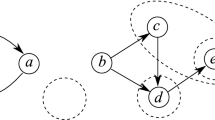Abstract.
Substructural logics are obtained from the sequent calculi for classical or intuitionistic logic by suitably restricting or deleting some or all of the structural rules (Restall, 2000; Ono, 1998). Recently, this field of research has come to encompass a number of logics - e.g. many fuzzy or paraconsistent logics - which had been originally introduced out of different, possibly semantical, motivations. A finer proof-theoretical analysis of such logics, in fact, revealed that it was possible to subsume them under the previous definition (see e.g. Aguzzoli and Ciabattoni, 2000).
Although proof systems for substructural logics are currently being investigated with remarkable success, their algebraic models do not seem equally satisfactory. In fact:
(i) such structures are often very weak, i.e. they do not possess many interesting algebraic properties;
(ii) as a consequence, their theories of ideals, congruences, and representation are as a rule scarcely developed, or even lacking.
In this paper, we address these difficulties.
Similar content being viewed by others
Author information
Authors and Affiliations
Additional information
Received: 18 February 2000 / Published online: 12 December 2001
Rights and permissions
About this article
Cite this article
Paoli, F. On the algebraic structure of linear, relevance, and fuzzy logics. Arch. Math. Logic 41, 107–121 (2002). https://doi.org/10.1007/s001530100098
Issue Date:
DOI: https://doi.org/10.1007/s001530100098



